Aria that became a requiem
To many definitions concerning Italy, the word “seemingly” is very appropriate. It seems to be a sea power at the beginning of the 20 century. It seems to have had a navy, army and air force. It seems to be involved in both world wars. It seems that in one of them was among the winners. It seems to be building ships, and it seems quite good. Yes, all of the above was the place to be. The question is how. And here begins the controversy.
I would like to draw the attention of readers to the main indicator of the technical condition fleet those years - on battleships. When at the beginning of the 20th century (in 1905) the British acquired the “Dreadnought”, everyone was torn off the roof. And each country with sufficient technical potential considered it necessary to acquire these expensive but sweet-hearted toys. USA, Germany, Austria-Hungary, France ... The Italians were no exception, since they had Vittorio Quinberti, who became the founder of the construction of dreadnought in Italy. And so, in 1907, Italy joined the race for the production of super-ships.
In 1910, the “Julius Caesar”, “Prince Cavour” and “Leonardo da Vinci” were laid, and in 1912 “Andrea Doria” and “Kayo Duilio”. Due to small differences, the first three were named as the type “Julius Caesar” (JC), and the other two as the type “Kayo Duilio” (CD).
Battleships had the following indicators:
Full displacement - 24500 tons (average, deviations for each of the ships amounted to +/- 200 tons).
Power plant: 31000 l / s (YTs), 32000 l / s (KD).
Speed: 22 node (YTs), 21,5 (CD).
Armament:
type "Julius Caesar"
305 mm - 13
120 mm - 18
76 mm - 14
450 mm TA - 3
type "kayo duilio":
305 mm - 13
152 mm - 16
76 mm - 19
450 mm TA - 3
Crew - 1000 man.
In addition, the type of CD carried a stronger armor, which affected its speed.
Accordingly, in 1911 and 1913, they were all launched.
The ships turned out, most likely, quite good. At least, they surpassed (theoretically) their fellow tribesmen from Austria and France. They lost to American and British ships before they could be commissioned by artillery power, since they were already carrying 343 and 356 mm guns. But for the actions in the Mediterranean that was enough.
The ships entered service almost simultaneously with the beginning of the First World War. In fact, the Italian battleships did not participate in it, limiting themselves to firing, demonstration of force, and the like. Fleet management did not want to risk expensive toys. Familiar picture for those years, is not it?
During the three and a half years of hostilities, the battleships not only did not make a single shot at the enemy, but did not even see him. "Julius Caesar" spent two combat campaigns, with a total length of 31 (!!!) an hour. There should be no comments.
Sports observers (forgive me for such an analogy) say that if you do not attack you will attack you. And, 2 August 1916, in 23-00, on the Leonardo da Vinci standing in Taranto thundered. It seems to be not strong, the majority of the team did not even feel it. There was a smoke ... The commander of the ship, who arrived at the emergency site, declared alarm and ordered the stern cellars to be flooded, as there was clearly a fire there. And in 23-22 shied away in an adult way. And, in 23-40, the battleship began to sink, and in 23-45, it rolled over with the keel and drowned.
All responsibility was assigned to the military intelligence of Austria-Hungary and the captain of the rank of 1 Meier. In the 1917 year, documents were obtained that allowed the Austro-Hungary intelligence network in Italy to be crushed and the subsequent outrages prevented.
For thirty months the Italians raised the drowned man. And at the end of August, 1919 was still raised. And found the reason for such a rapid flooding: all waterproof doors open without exception. This is by the way about the harmfulness of prolonged mooring at the pier and the eternal Italian pofigizmu. Attempts to restore the battleship were not crowned with success, and royal decree No. 656 from 26.03.1923 “Leonardo da Vinci” was excluded from the fleet and sold for scrap. A curtain.
War is over. During the time left before World War II, the remaining battleships didn’t show anything special, with the exception of capturing Corfu Island in August 1923, when a detachment of 250 battleships and 4 destroyers was sent to capture the island with a garrison in 13.
8 April 1925, the turn of "Duilio". During the practice of shooting in the upper elevator of the tower №3 jerked so that the ship was out of order until the year 1928.
In May 1928, the Julius Caesar became an artillery training ship, and the Conti de Cavour was taken as a reserve for modernization. "Dante Alighieri" was not lucky: 1 November 1928, he was removed from the fleet and sold for scrapping ...
In 1932, Doria and Duilio were also taken to the reserve. But in the same year an event occurred that made the leadership of the Italian fleet pretty hard. France laid the battleship Dunkirk, which, with its 30 nodes and 8 330 mm tools of the latest design, could tie a pair of Italian veterans alone to the sea. It was decided to overhaul.
As a result, “Julius Caesar” and “Conte di Cavour” got 10 mm 320 guns, 12 mm 120, 8 mm 100 anti-aircraft guns, 12 mm 37 machine guns, 12 mm 13,2 machine guns. “Kayo Duilio” and “Andrea Doria” received 10 320 mm guns, 12 - 135 mm, 10 anti-aircraft 90 mm, 15 - 37 mm and 16 - 20 mm machine guns.
Were replaced and power plants, which led to an increase in speed to 26 nodes.
In general, veterans got a second life. The Italians, according to the British estimates, brought their fleet to a place in the world 4. The battleships were not inferior to the English in firing range (albeit with a slightly smaller caliber), and even exceeded in speed.
The Second World War began.
After the capitulation of France and the destruction of the French fleet by the British, the main enemy of Italy was the British fleet.
The first major clash between the British and Italian fleets, known in Italian sources as a battle at Punta Stilo, and in the British - as an action at Calabria, took place on July 9 1940 near the southeastern tip of the Apennine Peninsula. By coincidence, the Italians and the British simultaneously conducted large convoys: the first - to Libya, the second - from Alexandria to Malta. To cover them, both sides launched the main forces of their fleets: the Italians, the battleships Giulio Cesare (flag of Admiral Campioni) and Conte di Cavour, 6 heavy, 10 light cruisers, 32 destroyer; the British - the battleships of "Worspayet" (flag of Admiral Cunningham), "Malaya", "Royal Sovereign", the aircraft carrier "Eagle", 5 light cruisers and 16 destroyers.
The starting point of the battle can be considered a raid torpedo bombers "Suordfish" from "Needle", held in 13.30. At this time, heavy cruisers were moving northward behind the battleships in the wake column in the following order: Bolzano, Trento (flag of the commander of the 3 Division, Rear Admiral Cattaneo), Fiume, Gorizia, Zara (flag Rear Admiral Matteucci), "Paul" (flag of Vice Admiral Paladini). It was on them and hit the torpedo, who took the cruiser for enemy battleships. The main targets of the attack were the middle ships of the convoy, but they all successfully avoided the dropped torpedoes, which encouraged the crews.
Visual contact with the enemy Italians installed in 14.54. By that time, the Paladini cruisers had captured their battleships and were still in the same column on their left - opposite to the enemy - traverse, therefore they could not participate in the exchange of fire with the head cruisers. The approach of the "Worspite" made the Italian light cruisers, located in front of and to the right of the main forces, put up a smoke screen and hastily get out of the battlefield. By 15.53, when the battle of the battleships began, both divisions of heavy cruisers advanced into the head of the battle formation of the Italian fleet and entered fire contact with the British cruisers. According to Admiral Paladini’s report, Trento opened fire on 15.55, Fiume on 15.58, Bolzano. Zara and Paula are in 16.00, and Gorizia are in 16.01. The distance was about 10 miles. “When our ships started shooting,” the admiral wrote, “enemy cruisers fired back. Their shooting was accurate, but mostly ineffective. Only Bolzano in 16.05 got hit by three fragments. They pierced the stern and damaged the rudders, jamming them in the position "left aboard." The ship described the full circulation, continuing to fire. Then a few close gaps behind the stern freed the rudders, and the cruiser again took its place in the ranks. " In fact, Bolzano received three direct hits of 152-mm projectiles (apparently from the Neptune cruiser), which damaged the steering, the barrel of one of the cannons of the elevated turret and the placement of torpedo tubes.
The decisive moment of the battle took place in 16.00, when Cesare hit the 15-inch projectile from the Worspite in the middle section. Three minutes later, Campioni turned away to the south-west, ordering Paladini to put up a smoke screen to cover the exit of the battleships from the battlefield. In fact, the Italian cruisers had to take care of their own safety as well, since in the 16.09 the British flagship, which the Malaya joined after some time, suffered on them. 16.17 destroyers put a thick smoke curtain that forced the British to stop firing, thanks to which the Paladini ships did not suffer from extremely dangerous battleship projectiles, as well as from the next attack of torpedo bombers from the Needle, who chose the Bolzano headline and announced their achievements hits, which in reality was not.
The artillery battle was over, but the tests for the Italian ships did not end there. The Italian Air Force sent bomber 126 bombers to attack the British fleet. However, their pilots demonstrated a complete inability to distinguish their ships from enemy ones. As a result, the Cesare, Bolzano and Fiume were attacked by their own planes - fortunately, everything was limited to close breaks, and the caliber of bombs did not exceed 250 kg. The result was Kampioni's order for applying red-and-white oblique strips for identification from the air.
The heavy cruisers led by the Hollow were heading to Augusta, but shortly after midnight on July 10 they received orders to move through the Strait of Messina to Naples, as Supermarina was afraid that ships in the Sicilian ports might be attacked by the British aviation. Prudence was not superfluous: on the same day, Augusta was attacked by torpedo bombers from the Igla - they destroyed the destroyer Leone Pankaldo ...
Any conclusions on the actions of heavy cruisers in the battle of Punta Stilo are difficult to do. Their passive role in the initial stage of the battle was the result of mistakes in the deployment and construction of the fleet battle order. Then they had a chance to prove themselves, but in a ten-minute shootout, not a single hit was achieved. Since, under the same conditions, the British light cruisers had hit, we can say that the Italians received the first assessment of the quality of their artillery - an assessment, alas, a negative one.
On this, the participation of battleships in the war was suspended by the command of the fleet "Until the commissioning of new ships."
On August 2, two new battleships Littorio and Vittorio Veneto were commissioned. But this did not affect the actions of the Italian fleet. Two unsuccessful exits to the sea are all that the fleet could boast of.
In early November, 1940, Cunningham (commander of the Mediterranean fleet), sent reinforcements. Now he was ready to attack Taranto, where there were 6 battleships, including the newest Vittorio Veneto and Littorio. Several heavy cruisers were also based there. The plan of the operation provided for the attack of two waves of the Suordfish torpedo bombers in the moonlight. The attack was used "Illastries". Ships in the inner harbor were supposed to be attacked with bombs.
Reconnaissance aircraft from Fr. Malta made a series of great shots of enemy anchorages. On November 11, these images were delivered to Illustries, so the crews of the torpedo bombers knew exactly the position of their targets. Admiral Cunningham decided to strike the same night.
Shortly before 21: 00, the first wave of the 12 Suordfish under the command of Lieutenant Commander C. Williamson took off from an aircraft carrier in 170 miles from Taranto. The second wave of 8 "Suordfish" commanded by Lieutenant Commander J. W. Hale took off an hour after the first. Around 23: 00 airplanes illuminators and bombers completed their task and freed up the first torpedo bombers.
Those sank to the water and crashed into links on the 3 of the aircraft to slip between the barrage balloons, although the enemy was on the alert, and the anti-aircraft fire was quite dense, the moon and lighting rockets provided excellent lighting. Italian battleships were perfectly visible. Cavour got hit by 1 torpedoes, and Littorio hit 2.
Then the second wave attacked. Her planes hit the 1 torpedo "Duilio", and another 2 got "Littorio", although one of them did not explode.
The result: “Littorio”, “Duilio” and “Cavour” were at the bottom.
"Littorio" was raised in December 1941, "Duilio" in January 1942, "Cavour" in July 1942.
So, the Italians lost half their heavy ships. The British won a convincing victory at such a low price that this case had to be carefully studied by all the belligerent countries. But the real conclusions were made only by the Japanese ...
After the ascent, Cavour was sent to Trieste, where 1943 was slowly repaired until September. The German troops, taking Trieste, did not pay much attention to the half-disassembled ship, which had quietly rusted in the harbor until February 15, 1945, where the Allied aviation sank it during the next raid. "Cavour" turned over and sank, completely repeating the fate of "Leonardo".
The remaining "Duilio", "Caesar" and "Doria" in 1942 were engaged in escorting convoys to Africa, until at the end of 1942, they were withdrawn to the reserve, and "Caesar" in general was transferred to the naval school in Pole, where he became something like a floating barracks with air defense batteries.
After the fall of the Mussolini regime and the conclusion of a truce, the entire trio was sent to Malta, where they stood from September 1943 to June 1944, when they returned to their bases in Italy and were not used for military purposes until the end of the war.
In 1948, Caesar was transferred to the Soviet Union as reparations, and Duilio and Doria served after the modernization in the Italian Navy until 1953, then were written off and dismantled.
Caesar was renamed Novorossiysk and served as the flagship of the Black Sea Fleet until October 29, 1955, when it was damaged by an explosion, rolled over and sank. After the lift was written off and cut into metal. But this is another, more sad story.
Five ships. Similar to each other not only externally, but similar in fate. The meaning of destinies can be described in one word: uselessness. Annals of history do not store any mention of hitting projectiles of the main caliber in any non-training target. Not won a single victory over the enemy. Symbols of the past. Doomed by their command to a worthless existence.
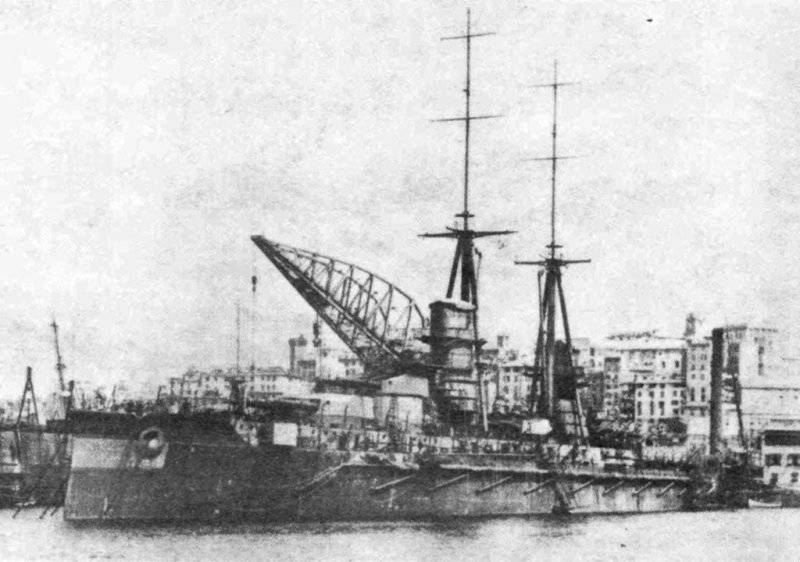
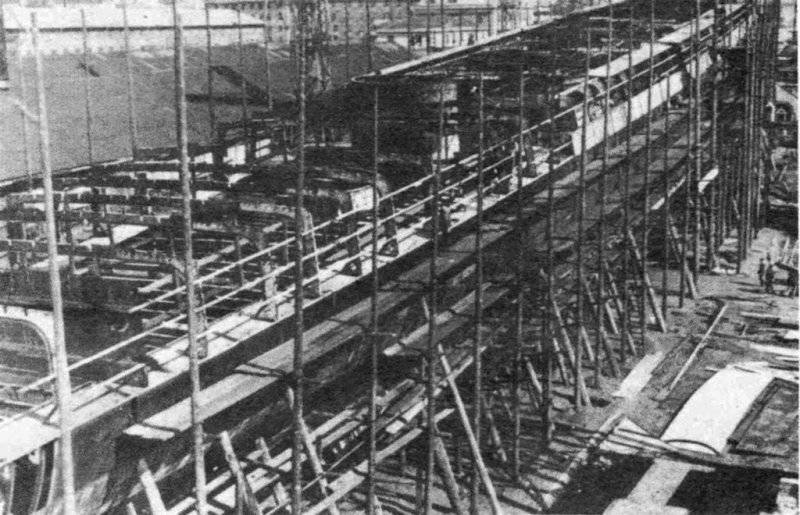
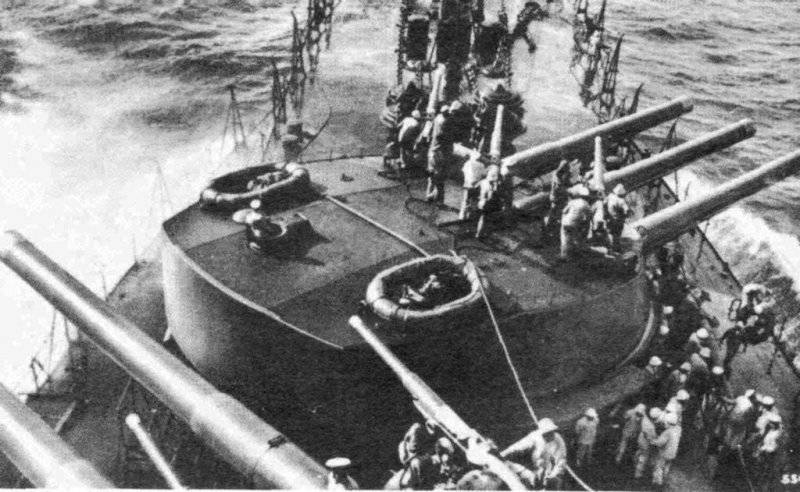
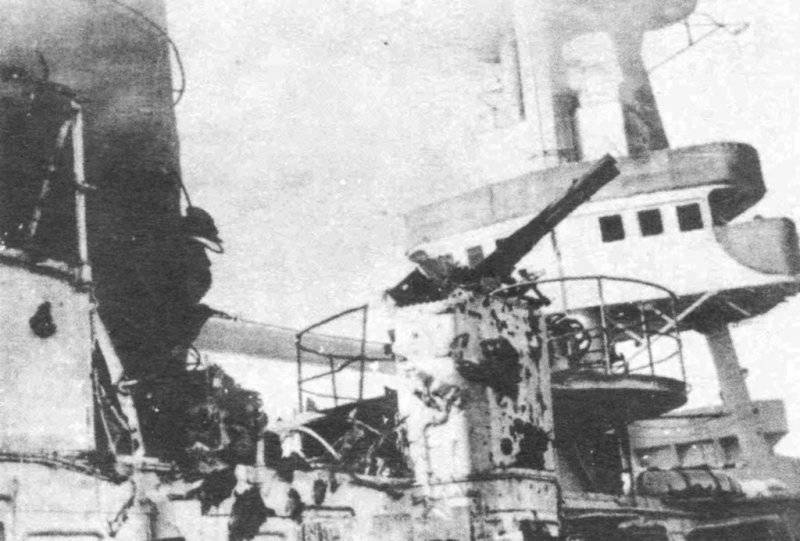
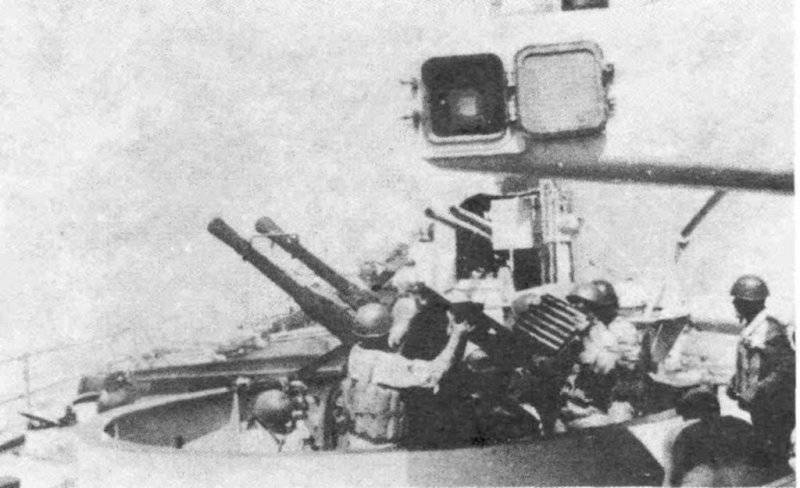
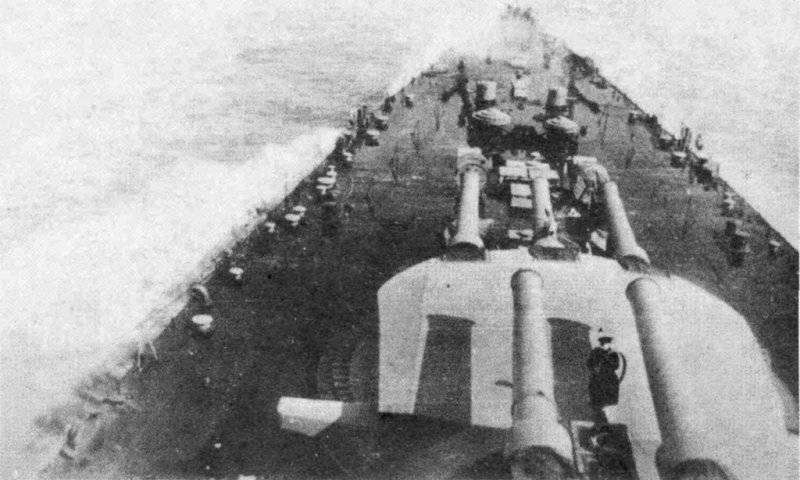
Information